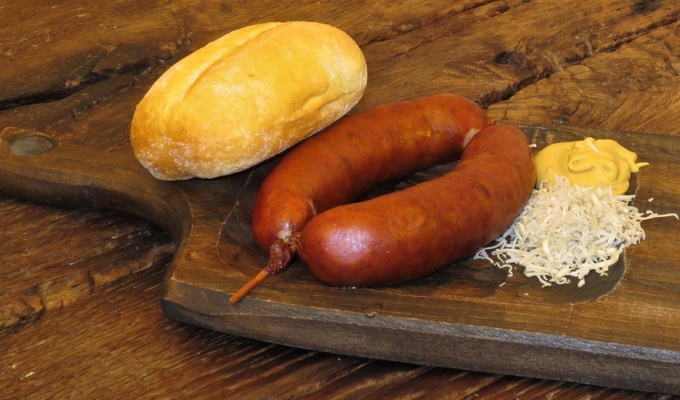The Carniolan sausage is a Slovenian sausage similar to what is known as kielbasa or Polish sausage in North America.
The noun klobasa refers to a small sausage generally served whole (in contrast to salama) in Slovene. The adjective kranjska derives from the region of Carniola (Kranjska in Slovene, Krain in German), which used to be a duchy of the Austrian Empire. The earliest mention of the Carniolan sausage in German is found in Katharina Prato's renowned cookbook Süddeutsche Küche (South German Cooking, 1896, first edition 1858). The Slovene term kranjska klobasa was first mentioned in the sixth edition of Slovenska kuharica (Slovene Cookbook) by Felicita Kalinšek in 1912.
The Carniolan sausage contains at least 75 to 80% pork (aside from bacon) and at most 20% bacon. It may contain as much as 5% water, the sea salt from Sečovlje salt pans, little garlic, saltpetre and black pepper. No other ingredients are permitted. The meat must be cut in small pieces 10 to 13 mm and bacon 8 to 10 mm. The filling is stuffed into pork intestine with a diameter of 32 to 36 mm. They are formed in pairs of 12 to 16 cm (4.7 to 6.3 in) lengths and a weight of 180 to 220 grams. Pairs are linked together with a wooden skewer. The sausages are hot smoked and heat-cured at about 70 °C (158 °F).
